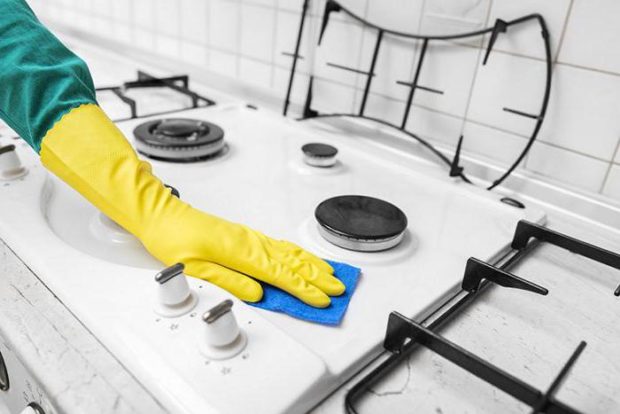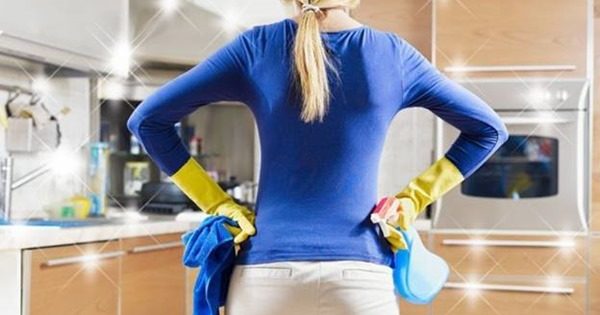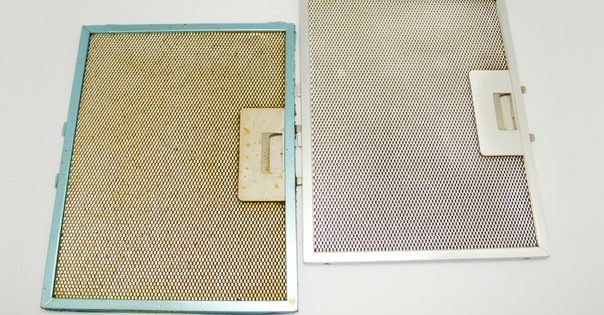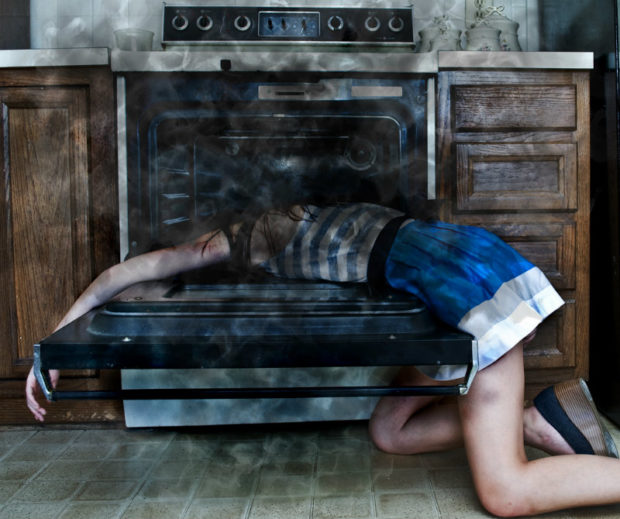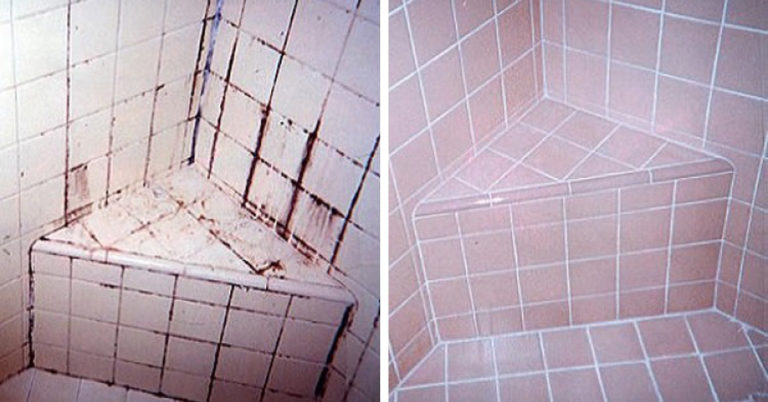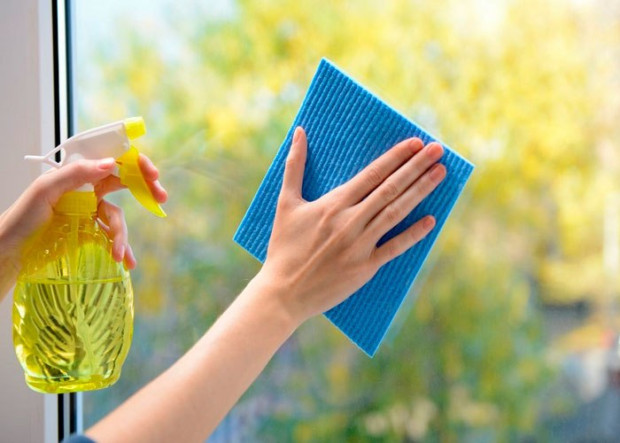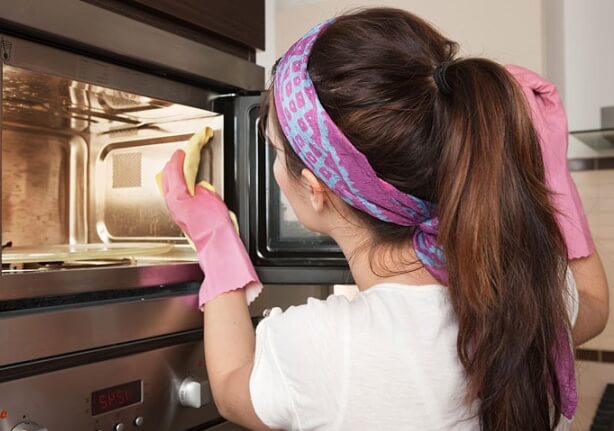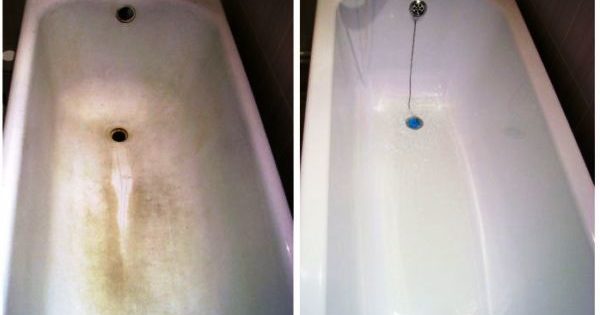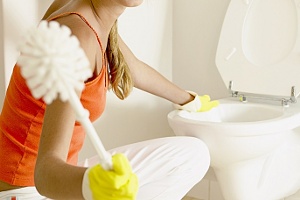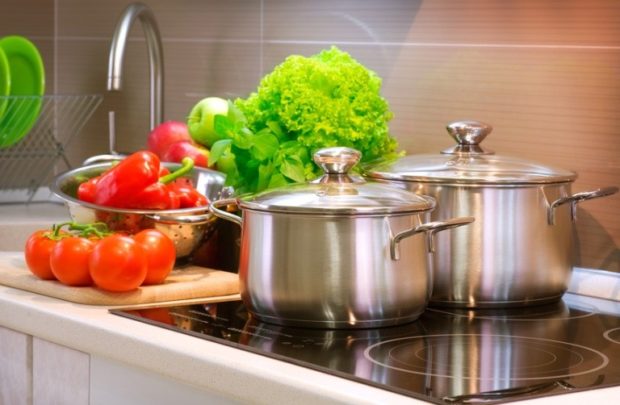22 ways to clean the stove from fat and carbon deposits at home
A stove along with a refrigerator and washing It is the center of the kitchen, it just gets to it the most, because almost any cooking process is accompanied by splashes of hot oil and boiling water. Sometimes particles of food fall on the hob, and we don’t even have to talk about the consequences of boiled and burnt milk. And if pollution in the oven do not catch the eye and can wait for cleaning until inspiration comes to the hostess, then you have to take care of the cleanliness of the hob, grids, burners and handles every day, because the state of the kitchen determines how neat and tidy it is. Let's try to figure out how to clean the stove from fat and carbon deposits at home in order to make the least effort and get the best result.
How to clean the hob
Any housewife knows that any pollution is best removed immediatelyotherwise, under the influence of high temperature (and this is an integral factor for the hob), the fat will harden and dry out, and then it will be difficult to cope with it. However, even the most tidy people do not always succeed in immediately removing pollution, since the stove and grill heat up during cooking, and it is not safe to carry out any manipulations. What can we say about those who are sometimes lazy or just have no time to clean the surface! To support stove clean, just know a few simple ways to clean it. Of course, surfaces are different - glass ceramics, enamel and steel require slightly different approaches, but the methods we have assembled can be considered universal and applicable to any type of surface.
Choosing any of the means described below, do not forget about safety precautions and some recommendations:
- if global cleaning of the stove is expected (not only the surface, but also burners, knobs and other elements), it is better to disconnect the device from gas and / or power supply;
- first, the grids are removed from the stove, then the burners are removed, which must be cleaned separately from the hob. If the handles are removable, then at this stage it is also better to dismantle them;
- before cleaning with a dry sponge, remove food particles, if any, from the surface of the stove;
- household chemicals and concentrated acid solutions can damage the skin of your hands, so be sure to wear gloves;
- it is better not to use abrasive detergents and metal sponges - they can scratch not only enamel and glass ceramics, but also stainless steel.

No. 1. Dishwashing liquid
This method lies on the surface, and every housewife, for sure, thought of herself using a regular detergent to clean the surface of the stove.If the fat is not very old, then just dampen the sponge, drip a little detergent on it, foam it and apply foam to the contaminated area. Soap solution can soften even quite serious pollution. It is better to leave it for 10-15 minutes, then rinse the foam with a damp sponge and wipe the stove dry.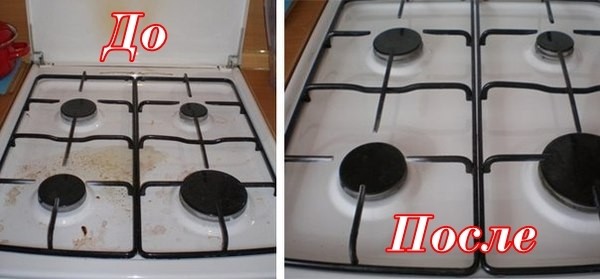
No. 2. Vinegar
Vinegar can handle more substantial and stale stains. It is most convenient to apply it with a spray, but you can just gently drip onto areas with fat and soot, distributing the liquid with a sponge. After application, leave the vinegar for 15-20 minutes so that it penetrates the impurities and softens them. After such a manipulation, all spots should literally move away from the surface with little effort.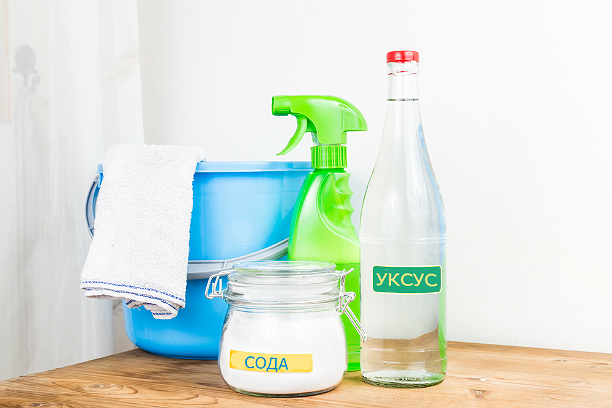
No. 3. Lemon or citric acid
The principle of action is identical to the previous method, because the active substance is acid there and there. On contaminated areas you can drip with lemon juice or rub them with a slice of lemon. An alternative is citric acid, which is pre-dissolved in a small amount of water. After applying the product, you must wait 15-20 minutes and try to carefully clean the surface of the plate with a sponge. When using lemon as a bonus, you get a pleasant smell.
Number 4. Ammonia
Liquid ammonia is also able to effectively clean old pollution from the hob. In a glass of water, dilute 1 teaspoon of alcohol and apply the resulting solution to the surface. Let the soaks soak for 10-15 minutes. Then, with the hard side of the sponge or with gentle movements with a toothbrush, the dirt can be easily removed. Do not use excessive force so as not to scratch the surface.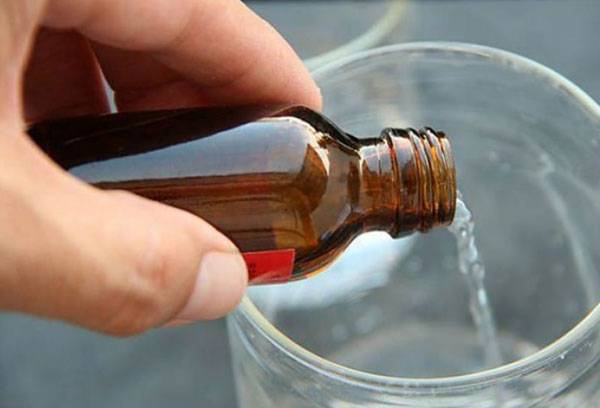
No. 5. Soda
Soda is a universal cleaning agent that comes to the aid in the process of cleaning the hob. Prepare a slurry of soda by pouring a little water into the powder. The resulting substance is uniformly applied to the hob and left for 30 minutes. Some housewives even rub a little gruel, but this must be done with extreme caution. After the allotted time, the soda is gently washed off with a damp sponge, it will be necessary to grate a lot of contaminated places. It remains to wipe the stove dry and enjoy its sparkling shiny surface.
Leaving soda gruel for 25-30 minutes is appropriate when the pollution is decent. On particularly difficult areas, it is recommended to apply more substance. If the case is not running, then a short soda attack lasting 5-10 minutes should be enough. When you have to wash the stove after unsuccessful culinary experiments or unscrupulous former tenants, then the gruel can be applied twice, each time repeating the above procedure.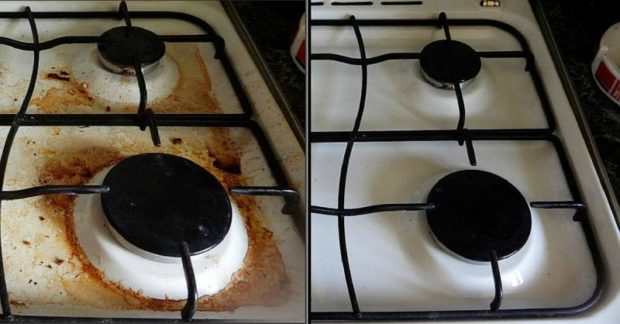
No. 6. Soda + Vinegar
If the stove is very dirty, or you are doing a general cleaning and you want all surfaces to sparkle like brand new, then it is best to use a proven pair of soda and vinegar. Table vinegar (concentration of 6% or 9%) is applied to the surface. You can act with a spray gun or pour some liquid on the surface and spread it with a sponge. The stove should be wet, but not floating in vinegar. Top you need to pour soda. What will happen as a result, we hope everyone knows. The mixture will hiss, because the components will react. We need to wait until the reaction is over and wash the surface. The plate will shine and literally creak. Do not forget to wear gloves!
Number 7. Soapy soda solution
The composition works almost as effectively as soda-vinegar. Well cleans the surface of carbon deposits and grease. To prepare the product, it is necessary to mix soda and liquid soap in a 1: 1 ratio, dilute the mixture with a small amount of water and apply the resulting substance to the hob.Now you can rest for 15-20 minutes, while the components of the product will affect the dirt, and then it remains to wash the solution along with the dirt from the surface, wipe the stove dry and enjoy the results.
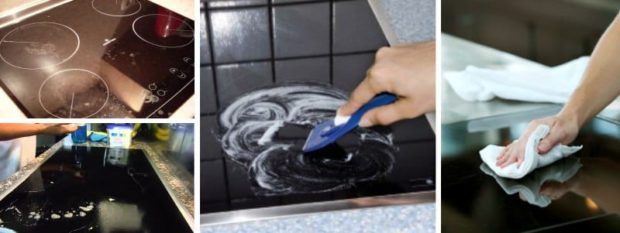
Number 8. Soda, powder and glue
With the help of this tool, you can easily wash away carbon deposits and stains, and with minimal effort. Exactly what is needed! It is necessary to shift 3 tbsp. tablespoons of soda ash, ½ cup of any washing powder and 1 tbsp. spoon of stationery glue (not PVA, it is better to take silicate), pour it all with a glass of cool water and mix well. Now the resulting mixture must be applied with a thin layer on the entire cooking surface and left to “work” for 15-20 minutes. After this, it remains only to wash off the product along with the particles of contamination, which should depart without much effort.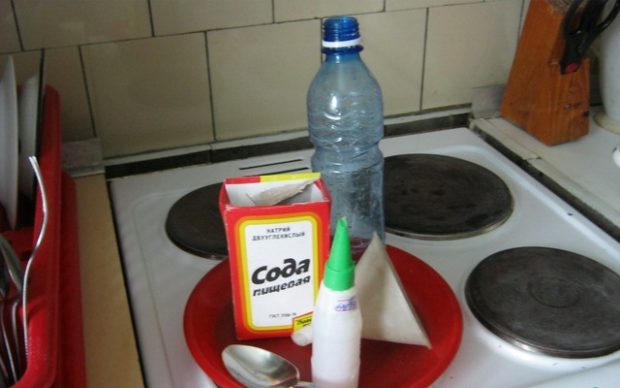
No. 9. Soap based detergent
This composition is often recommended for cleaning glass-ceramic surfaces, since it can not be washed with abrasive substances and metal sponges. If you look, any other surface is also better not to be exposed to such an impact, so this composition can be called universal.
So, you need to mix 20 g of soda, 2 tbsp. tablespoons of vinegar and 25 g of laundry soap. All this is dissolved in hot water. The resulting mixture is applied to the surface, left for a couple of hours and washed off with warm water.
No. 10. Salt composition
The effectiveness of salt is compared by some with soda gruel. In 0.5 l of water, 2 tbsp. Must be dissolved. tablespoons of salt. The resulting solution is applied to the stove and left for 8-12 hours, most conveniently - at night. After this, the dirt should be easy enough to leave and rinse off with a sponge, but if difficulties arise, then you can apply the above mixture of soap, soda and vinegar.
No. 11. Ammonia Drops
This tool, familiar to many from childhood, can be used as an independent cleaning substance, or in combination with soda. Drops are applied to contaminated places, you can sprinkle soda on top, you can do without it if the stove is in relatively normal condition. We leave the product for 15-30 minutes, after which the pollution should very simply move away from the surface.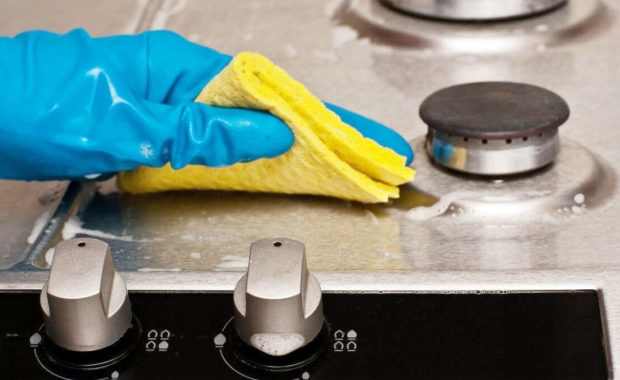
No. 12. Mustard powder
Mustard powder perfectly dissolves fat, so it has been used by housewives for a long time. Mustard powder diluted in water should be applied to the surface, left for several hours, and then washed off with a sponge.
There is another strange way of washing the stove with refined gasoline.
How to clean the gas stove grill
Gas stoves, as you know, are equipped with grates, which in the process of cooking get dirty no less than the surface itself. It is compounded by the fact that many housewives wash their grates much less often than the surface itself, so it is often not enough to simply wipe it with a detergent solution - the grease and scale have become so full that you have to use remarkable ingenuity and patience in dealing with them. Do not try to scrape off the dirt with a knife or other sharp objects - there is a high probability of damage to the material of the grate.
No. 12. Washing the grate in soapy water
The method is suitable for enameled gratings and stainless steel gratings - cast-iron products from such a long contact with water run the risk of suffering, becoming covered with rust. It is necessary in a sufficiently deep container (basin, bucket, bath) prepare a solution of soapy water. You can use detergent or household chalk. The gratings are placed in the solution for 8-12 hours, the dirt dissolves well during this time, and after completing such a bath it will be enough just to remove carbon deposits and dried up drops of fat with a sponge and dishwashing detergent. Some housewives use soda, which also effectively removes dirt, and someone instead of soaking sends the grate to the dishwasher.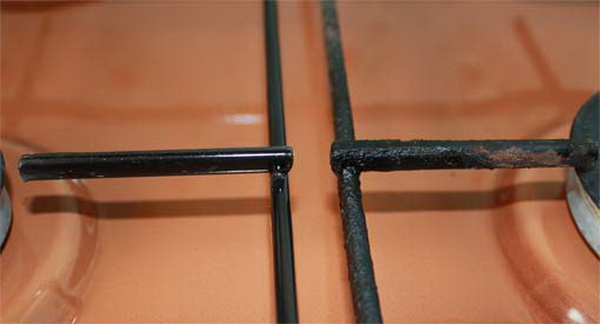
No. 13. Washing the grill with soda
We will need ½ cup of soda, in which you need to add a little water to make slurry.Using a sponge or a toothbrush, it is evenly applied to the grate, paying particular attention to joints and corners, where there is always much more pollution. It is better to leave the product for several hours. After such exposure, the dirt will be removed much easier, but you still have to tinker with it, using the hard side of the sponge and detergent (or ammonia) to clean it.
No. 14. Ammonia
The authors of numerous reviews on the Internet agree that this is perhaps the most effective way to clean the gas stove grill. It is necessary to moisten the sponge with ammonia and centimeter by centimeter very carefully process all parts of the grate. After that, it must be folded into a plastic bag and closed hermetically, leaving for 3-4 hours or even more. After this, it is necessary to rinse the grate and wash off the dirt with a sponge and detergent - soot and scale must literally move away from the metal surface.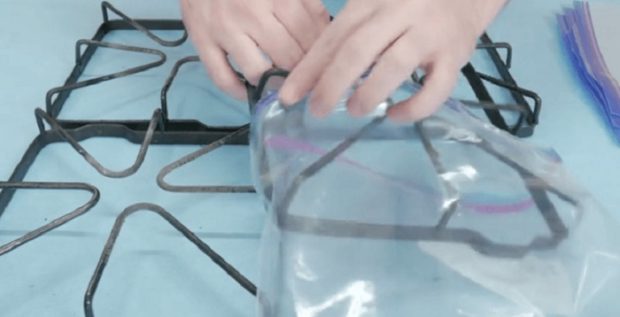
Number 15. Boiling
This method is recommended only for cast iron grates - others may not survive such an impact. You will need a sufficiently large capacity, where parts of the grill could fit. The owners of the stoves, where the grill is prefabricated and consists of 2 or 4 parts, are lucky - you can use a large pot or bucket. For every 10 liters of water add 5 tbsp. tablespoons of soda ash, a finely grated piece of laundry soap and a grated apple (malic acid will allow the surface of the lattice to shine after washing). It is necessary to immerse the grate in this solution and boil, boil, boil. The duration of the procedure is determined in each case individually - it is necessary to look at the state of pollution and how easily they are separated from the grate.
If the lattice does not fit in a pan or is not made of cast iron, then you can put it in a baking sheet and pour it with a hot solution prepared according to the recipe described above. We leave it to bite for 1-2 hours, and then proceed to washing with a sponge and detergent.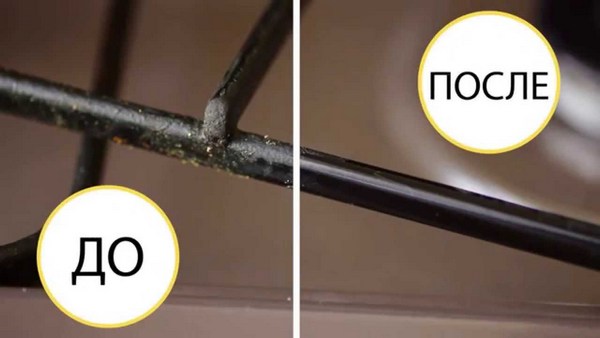
No. 16. Engine cleaner
A car engine cleaner may help. They need to carefully process the entire grate and rinse it thoroughly with water. It will take a minimum of time, but do not forget about hand protection products.
Number 17. Calcination
This method is only suitable for cast iron grates, which are considered the most difficult to clean. To reduce the adhesion of dirt and cast iron, it is necessary to heat the grate to an extremely high temperature, i.e. ignite. This can be done in the oven, over a fire or with a soldering iron. After this, the dirt will be very easy to wash with a sponge, water and dishwashing detergent.
How to clean pens and burners
Handles and burners also suffer from a constant ingress of fat, and they are often not given enough attention during daily care. Therefore, when hands reach to wash them, it’s not easy to clean off stubborn fat. If the burners are removed in almost all plates, then with handles it can be more difficult - they can be non-removable.
Number 18. Soap solution
The removed handles and burners must be soaked in warm soapy water for 15-20 minutes, then wipe off any dirt on the hard side of the sponge. If the elements were not in a very neglected state, then these manipulations will be enough to return them to their original form.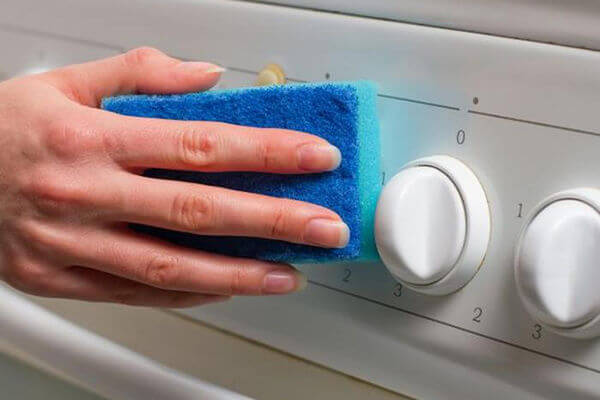
No. 19. Ammonia or ammonia
One of these tools is applied to a cotton pad or cotton bud, with which you need to wipe the handles. Removable handles and burners can even be soaked in a weak solution. Pure alcohol is not recommended - it is better to dissolve it in water in a ratio of 1: 1. Alternatively, you can offer vinegar, which also breaks down dirt quite efficiently, or lemon juice. Vinegar is best diluted with water 1: 1.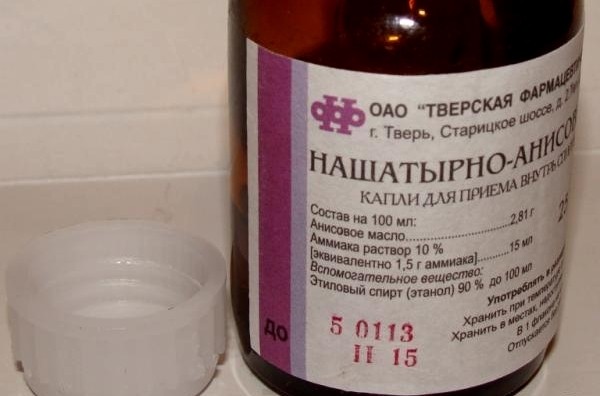
No. 20. Vinegar
You can use vinegar in a slightly different way, however, the method is suitable only for removable elements.In 700 ml of cold water, it is necessary to dissolve 200 ml of vinegar, immerse the handles and burners in the solution and begin to heat it, bringing to a boil. Let the elements boil for about 10 minutes, after which the solution can be drained. After the handles have cooled down, it is enough to wipe them dry - all impurities should go away by themselves.
No. 21. Gruel of soda
And nowhere without soda. A little water is added to it, getting gruel, which is applied to the toothbrush. Now it’s a matter of technology: it is necessary to carefully handle all the dirt on the handles and burners, and then wipe them with a damp sponge or rinse. The method is suitable for both removable and non-removable handles, just in the latter case it will be a little more difficult.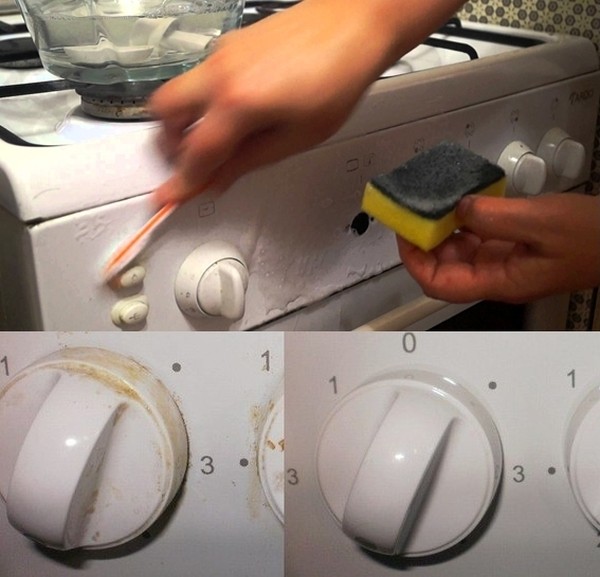
Number 22. Wet wipes
Usually wet wipes are impregnated with citric acid and castor oil, which are necessary for the effective cleaning of fixed handles. It is enough to wrap a napkin on a finger and try to remove all dirt as carefully as possible. Change wipes as they get dirty.
How to clean the burners
Burners, as a rule, do not suffer as much from pollution as other elements of the stove, but this does not mean that they do not need to be monitored. During the global cleaning of the stove, do not forget to remove the burners, wipe them with a damp cloth, then wipe them dry and check that all openings are clean. In the event of clogging, they can be carefully cleaned with a needle, safety pin or straightened paper clip.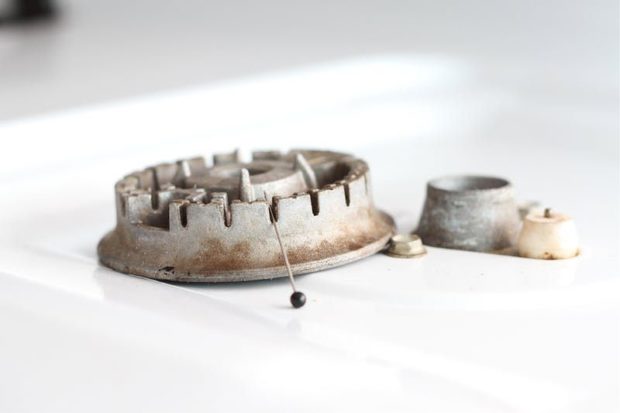
Finally
Of course, you can always use household chemicals. The main thing is not to take abrasive substances and always wear gloves. You can trust Fairy, Gala, AOS products, as well as tools that manufacturers of cooking surfaces themselves produce. Popular remedies bring their lower toxicity, low price and affordability (most components are always at home), and in terms of effectiveness, they are often not inferior to household chemicals.

